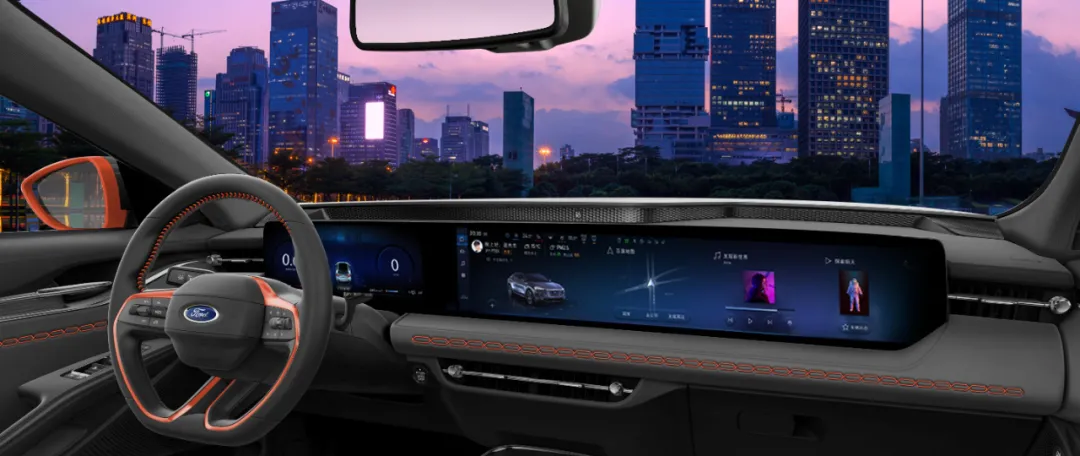There is no exaggeration to say that the Shanghai Auto Show is a turning point.
The changes and trends are obvious. The trends towards intelligence and electrification are irreversible, and they have really transitioned from policy-oriented to consumer-oriented. Users are beginning to vote with their feet.
In the process, many people will ask:
With such fierce new forces, do traditional automakers still have a chance?
We have talked about Volkswagen and General Motors before. In this article, let’s talk about Ford. At the Shanghai Auto Show, the Ford Mustang Mach-E attracted a lot of attention, but more people ignored another very important product-Ford EVOS.
If Mach-E opened the chapter of electrification, then the core keyword of EVOS, a brand new high-end mid-size SUV, is “intelligence”. It elaborates Ford’s development direction of intelligent technology for future products in the Chinese market.
I have experienced some product points in advance and would like to share a few feelings.
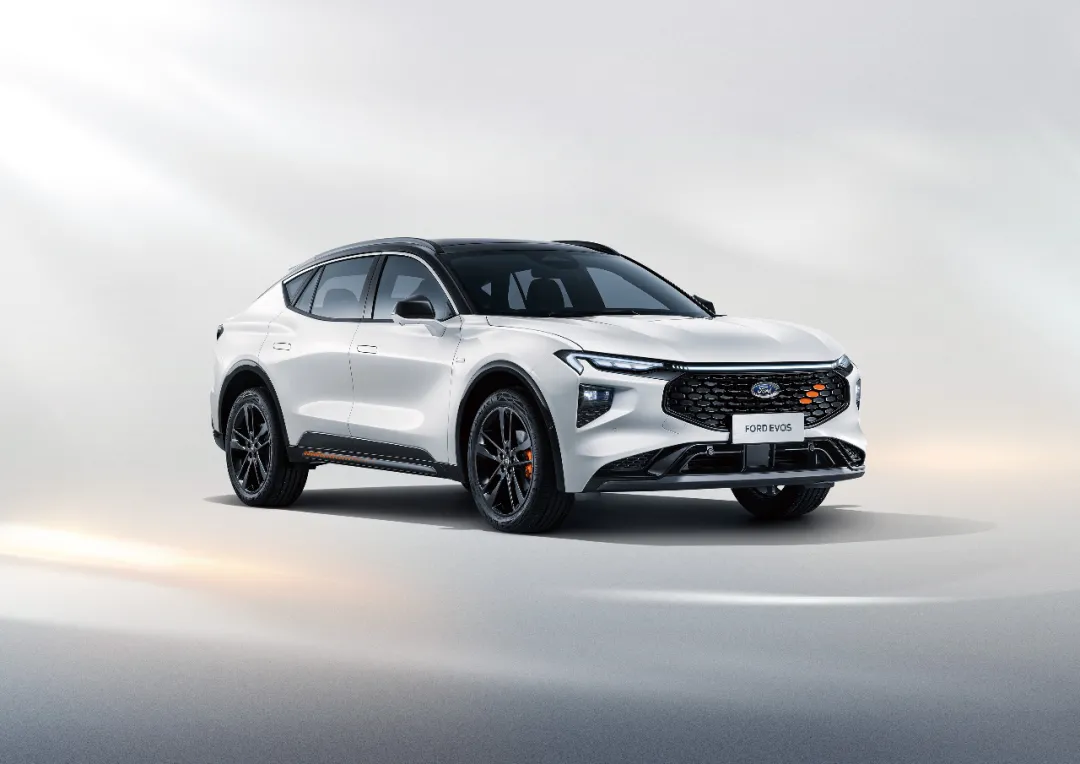
Insight into users
Maybe it’s because I have seen too many new cars recently. When I first saw Ford EVOS, I thought it was a very good-looking car, but I didn’t have the feeling of being “shocked”. However, with a deeper experience and understanding, this feeling changed.
In the past, in our impression, traditional car companies like Ford tended to be relatively “self-centered” when designing and defining a product, and at most, they would study a competitor’s model in terms of configuration and function. However, as the first global strategic model launched under Ford China 2.0 plan, Ford EVOS’s core characteristic from the bottom design is to be “user-oriented” at the beginning of product definition.
This experience is most directly reflected in the product points related to intelligent technology.
After a long period of user research, Ford has developed users’ demand for intelligent cabins, mainly including “self-expression”, “collaboration”, and “social entertainment” in three major scenarios.
We will break them down and discuss them one by one.
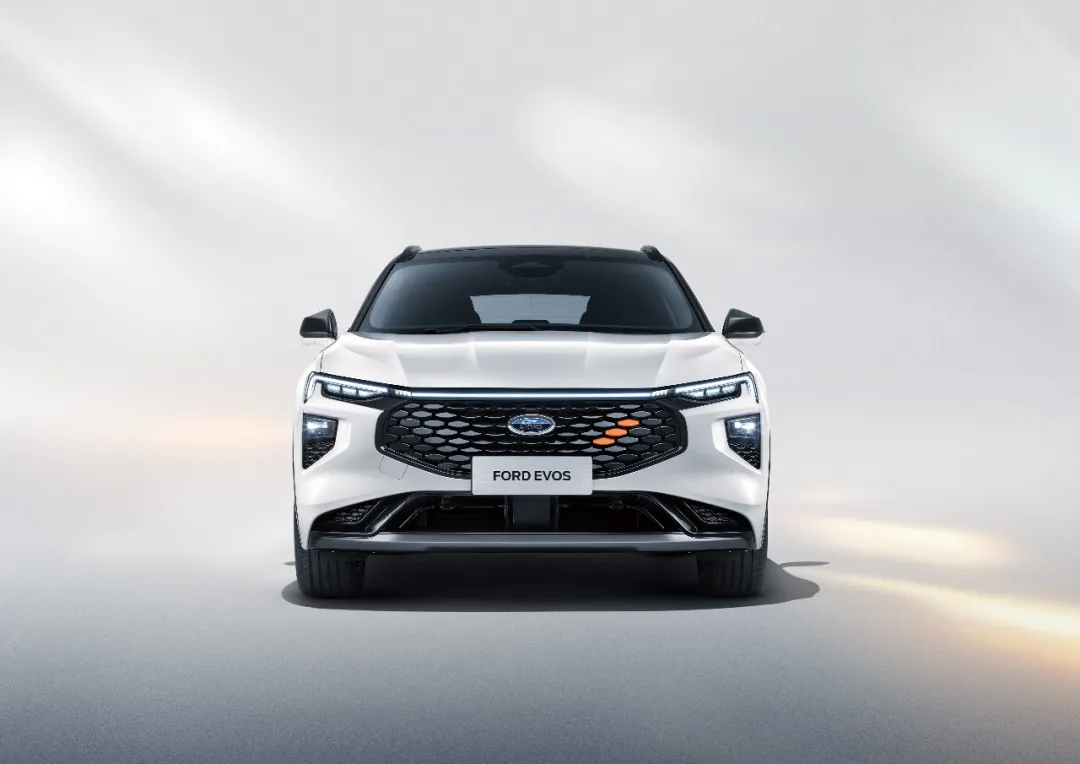
First is “self-expression”. This description is very artistic. A more simple and straightforward description is when my friend sits in my EVOS, I can point to a certain configuration, open a certain function, and ask proudly, “How about this?”
In terms of effect, Ford EVOS really achieves it.
Before entering the car, the outside welcome induction system will start first, with the headlights at the front and back lighting up in sequence, the grille undulating like scales, and the hidden door handles popping out seamlessly from the inside of the door. The slight details all give a gentle Versailles feeling.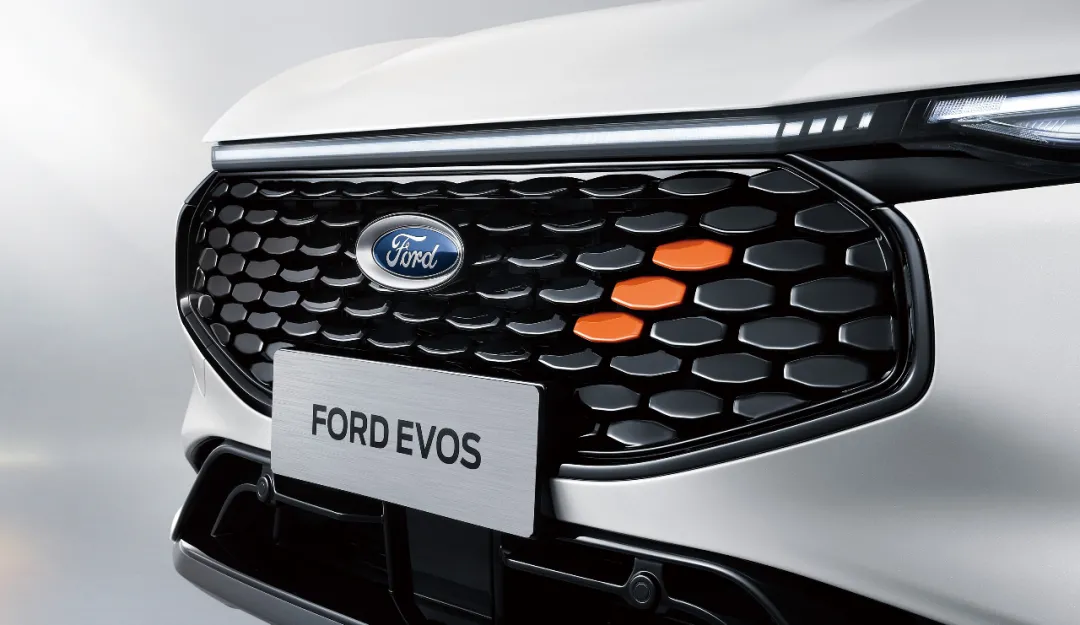
After entering the car, a 1.1-meter ultra-wide panoramic screen, serving as the hardware core of the intelligent cockpit, is very striking. It consists of a 12.3-inch high-definition instrument panel and a 27-inch 4K high-definition central control screen. Embedded in the SYNC+ 2.0 intelligent connectivity system, this system uses the mainstream Qualcomm Snapdragon 820A vehicle-grade processor in the industry and comes equipped with Ford’s first virtual AI assistant – the VPA intelligent partner. The commonly used voice function supports natural semantic recognition and supports more than 70 semantic subcategories, allowing control of various in-car usage scenarios, including air conditioning, seats, sunroof, steering wheel, and ambient lighting.
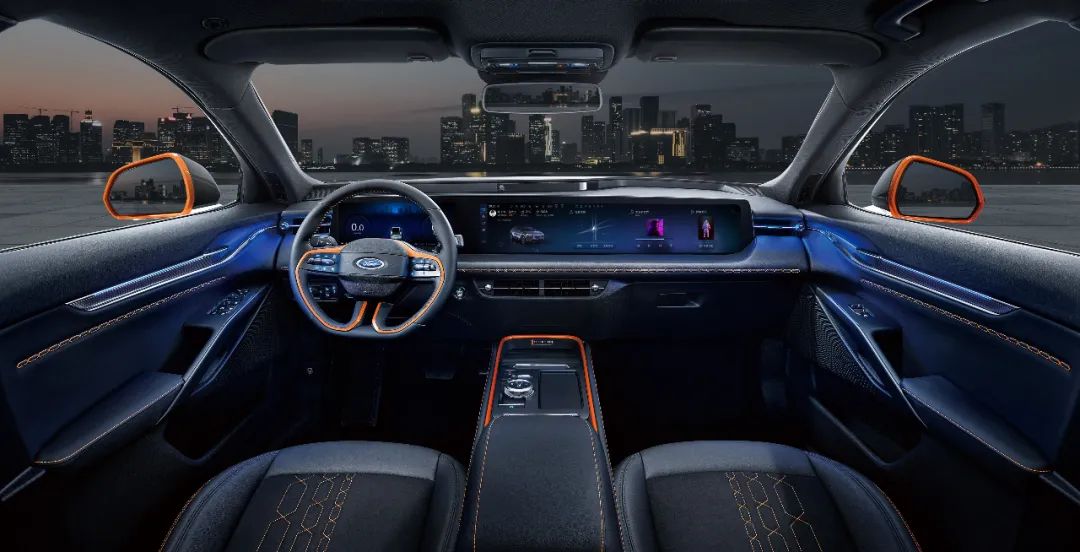
Ford once said that the SYNC+ system is “the best used car machine for joint venture brands” and it is not just an empty boast. In last year’s Ford Connected Vehicle Report, data from over 40,000 car samples showed that the overall satisfaction rate of Ford SYNC+ users during the survey period reached 79%, and the system was awakened over 5.48 million times with a total of more than 189 million interactions, averaging 13 voice interactions per person per day. The satisfaction rates for users regarding the response speed, ease of use, and OTA upgrade of the car machine reached 79%, 80%, and 77%, respectively.
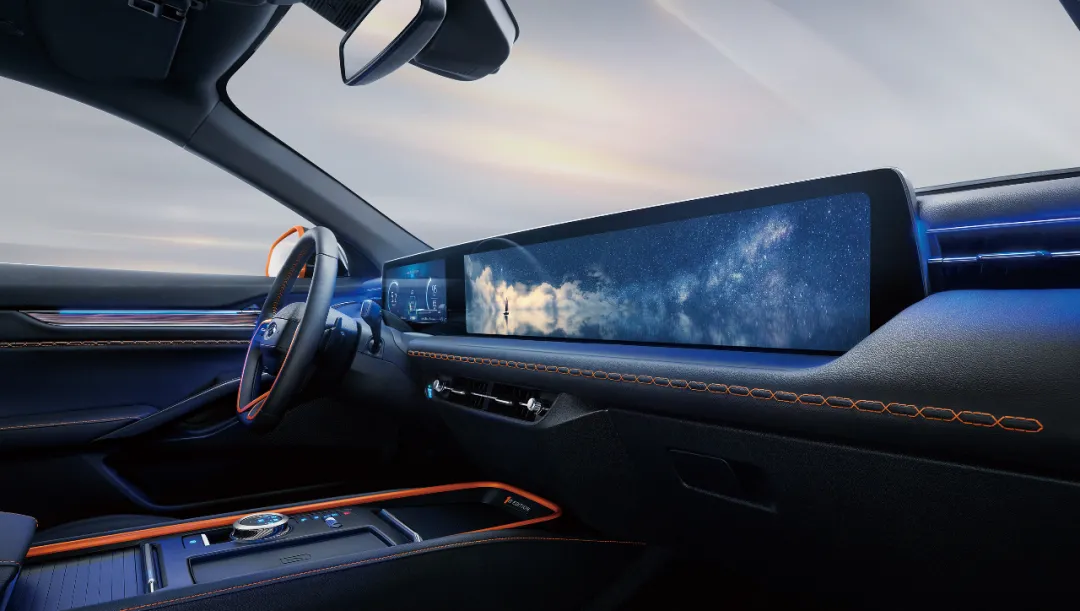
It is worth noting that on the Ford EVOS, the SYNC+2.0 intelligent connectivity system also supports gesture recognition, allowing car owners to interact with the in-car large screen through simple gestures, such as the “shhh” gesture, which will pause the music function, and the “OK” gesture, which will resume playing music.
Therefore, we see that whether it is the 1.1-meter large screen, natural semantic recognition function, VPA intelligent partner, or gesture control system, they are all what the Ford EVOS expects, satisfying users’ desire for self-expression.
Some of them may not be necessary, such as the 1.1-meter screen, which can be replaced by a smaller or separate one, with lower cost and technical difficulty. For example, if the gesture control system is not configured, voice and buttons seem to be enough. But don’t forget, it is precisely these “cool” features that will bring double satisfaction to users.
That feeling is like four years ago when you pulled out the latest generation iPhone X to show everyone the screen that first eliminated the home button. Even though it may not necessarily be your necessity, it doesn’t stop you from liking it.
This is a sense of superiority standing at the forefront of the times.
Underlying Logic
Let’s talk about “Collaborative Cooperation” again.
There is a feature that directly explains Ford’s understanding of “Collaborative Cooperation.”
Ford EVOS introduced the industry’s first “Joint Driving Fun” feature on the central control screen, which allows the front passenger to view navigation, vehicle status, road signs and other information in the split-screen mode. The front passenger can also switch navigation addresses and swipe manually for the driver.
When I first learned about this feature, many media friends in the same industry had doubts and asked me what I thought of it. I smiled and said, “This feature is perfect for my wife.”
As an extremely “worried” copilot driver, my wife is used to giving me directions every time we drive. Even when I am completely awake during long-distance driving, she still provides me with occasional “wake-up” services, which makes me very anxious about safety. Therefore, I believe that with Ford EVOS’s “Joint Driving Fun” feature, she will be very happy.
It is worth noting that the “Joint Driving Fun” feature can also simultaneously achieve different tasks according to the needs of the driver and copilot. For example, they can separate driving and entertainment functions. When the copilot uses the entertainment function, the driver does not need to disconnect the navigation function. However, when the copilot is watching a video, the driver monitoring system in the car will be activated to check whether the driver’s line of sight is distracted by the copilot’s entertainment content. If the driver’s line of sight is diverted for too long, the video will automatically stop playing to ensure driving safety.
In my opinion, “Collaborative Cooperation” conceals the underlying thinking of Ford’s product design and a keyword that they engrave in their genes-“Safety”.
Compared with many new forces, this is Ford’s biggest difference in defining products. In the process of pursuing technology and coolness, they are more aware that a vehicle as a mobile space must ensure absolute safety for users.
This is beyond the tactical level and is at the strategic level. Without long-term accumulation and several million or even tens of millions of vehicles, it is difficult to summarize and implement it persistently.
Entertainment Behind
In addition to “Self-expression” and “Collaborative Cooperation”, Ford EVOS has another core scenario in the definition of intelligent cabin-“Social Entertainment”.
A more typical feature is the “Free Secret” mode.When users want to enjoy some leisure time alone in the car, they can activate this function. The 27-inch 4K high-definition screen displays animations while the soothing music from B&O sound system and appropriate ambient lighting create a comfortable atmosphere. The seats are automatically adjusted to the most comfortable position. In addition, the SYNC+ 2.0 intelligent connectivity system is equipped with video and audio resources such as iQiyi, QQ Music, and Ximalaya, and it is the first to integrate in-car music selection and karaoke function.
Some people may ask, it seems like there are no new features after all this talk.
It is objectively true that the services and applications on the vehicle end are limited by various factors and not as diverse as those on mobile devices.
The biggest limitation is the traditional vehicle electronic and electrical architecture. They are distributed, and a car may have over 70 ECUs, which are electronic control units.
There are three obvious issues with this. First, although there are many ECUs, the overall computing power is weak and not as high as that of mobile devices. Second, they are not connected with each other, and independent components are responsible for independent functions, but information cannot be exchanged. This is reflected in the inability to update the entire vehicle OTA on the user’s end. Third, there is no standardized large platform for software developers, just like in the realm of mobile devices. Without IOS and Android, there would not be the current prosperity.
Tesla was the first company to innovate by integrating the 70 or more ECUs in most car models into three main parts in the Model 3: the Central Computing Module (CCM), the Left Body Control Module (BCM LH), and the Right Body Control Module (BCM RH). This is very similar to the computer era when Intel’s x86 simplified the complex computing system into three main components: the CPU and the North and South Bridge chipsets. This helped the computer become a true computer, enter people’s homes, and rapidly empower software.
It is worth noting that Ford EVOS also uses a new intelligent electronic and electrical architecture – the FNV intelligent interconnect architecture. As the “central nervous system” of the vehicle, it provides high-speed and stable data transmission and processing capability support for the application of the entire vehicle in areas such as security strategy, intelligent cockpit, intelligent driving, and whole vehicle OTA.Here’s the key point: The FNV Intelligent Interconnected Architecture can help Ford EVOS achieve OTA upgrades for the entire vehicle.
When it comes to upgrading the intelligent in-vehicle system, it can be upgraded without blackouts during the upgrade, without pausing any vehicle functions in use. It supports breakpoint resume and can complete a silent and “sensory-free” upgrade within a maximum of 30 minutes. In addition, it adopts the A/B backup design. When the upgrade is accidentally interrupted, it will automatically recover to the previous version without affecting vehicle use. During the process, there is also dual encryption protection to ensure data security.
But if you ask, what new features will there be?
To be honest, besides upgrading commonly used functions such as navigation, voice control, and in-vehicle entertainment, I can’t say for sure what else there will be. It’s just like ten years ago before the arrival of IOS and Android, no one knew that there would be WeChat, Alipay, Didi, or TikTok.
Isn’t that what makes smart cars interesting?
This article is a translation by ChatGPT of a Chinese report from 42HOW. If you have any questions about it, please email bd@42how.com.
